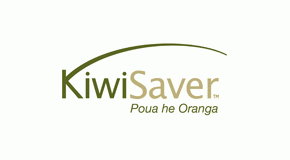
KiwiSaver default providers will retain the "conservative" investment approach, the Government has decided.
"The Government believes it should take a risk-averse approach, as the default provider arrangement is making initial investment decisions on behalf of others. The conservative option, with no less than 15% and no more than 25% of members’ assets in growth assets, is most consistent with this,” Finance Minister Bill English said.
English and Commerce Minister Craig Foss have released results of the first review of KiwiSaver default providers.
The current default providers were appointed for a seven year term when KiwiSaver was launched in 2007. The original six providers were AMP, Axa, Mercer, ASB, Tower and OnePath.
Subsequently AMP and Axa have merged and Tower Investments was taken over by Fisher Funds.
There are currently 2.1 million KiwiSaver members. Around 36% of those initially enrolled in a default fund have chosen to move to another fund or scheme and 23% have remained in default funds.
The seven-year term is due to expire in June 2014.
It is expected a Request for Proposal (RFP) will be issued in the coming weeks for the next seven year term, with the new default providers expected to be announced by April 2014. The Government says it would look at a maximum of 10 default providers.
If an existing provider is not reappointed, those who hold KiwiSaver funds with them will be asked if they want to stay with their existing provider. If the default member opts to stay with the existing provider, they will cease to be a default member. If they don’t opt to stay then it is expected they will be reallocated evenly across the appointed default providers.
English and Foss released the following statement:
The ministers today announced a raft of decisions about KiwiSaver default provider arrangements following a comprehensive review which was agreed when KiwiSaver was launched in 2007.
“With 2.1 million members and about $15 billion of funds under management, KiwiSaver has quickly established itself as a key part of New Zealanders’ retirement savings,” Mr English says.
“The default provider regime is a an important part of that scheme, with about 465,000 New Zealanders remaining in the default fund to which they were allocated, and those default funds currently managing about $3.4 billion on behalf of New Zealand savers.
“It is vital we continue to build on KiwiSaver’s contribution to developing a savings culture and lifting New Zealanders’ confidence in our financial sector,” Mr English says.
Mr Foss says the decisions outlined today will form the basis of the upcoming tender process for default providers for the next seven-year term beginning in July 2014. Those providers will be appointed by April 2014.
A competitive tender process will begin later this year. The tender selection criteria will be the same as it was in 2006, with one additional requirement which is that prospective default providers will have to demonstrate how they will offer investor education to encourage default members to actively choose which fund they should be in.
KiwiSaver default provider review decisions:
- Conservative investment approach remains.
- The basic criteria for selecting default providers will remain: investment capability, corporate strength, administrative capability, track record and stability.
- New criteria will require providers to offer investor education to default members.
- If a current default provider is not reappointed, their default members will be asked if they want to stay with that provider. It is expected that if they do not opt to stay, they will be reallocated evenly across the appointed default providers.
- The Government does not expect to appoint any more than ten default providers.
“The aim of default funds is to provide stable returns and build confidence in KiwiSaver while members actively consider the best fund for their individual circumstances,” Mr English says.
“The Government believes it should take a risk-averse approach, as the default provider arrangement is making initial investment decisions on behalf of others. The conservative option, with no less than 15 per cent and no more than 25 per cent of members’ assets in growth assets, is most consistent with this,” Mr English says.
Mr Foss says it is important that individual KiwiSaver members actively decide how their KiwiSaver funds are invested and the new requirements will help them to do this. Many New Zealanders have already moved from a default to a non-default fund.
“In addition, the new KiwiSaver disclosure rules which came into force on 1 July 2013 will require providers to publish simple and consistent information which will help encourage KiwiSaver members to compare KiwiSaver schemes and make an active choice,” Mr Foss says.
Questions and answers and Cabinet papers are available here:www.med.govt.nz/business/
business-law/current-business- law-work/changes-to-kiwisaver/ default-provider-arrangements Ministers will release the Request for Proposal for the second-term selection round in coming weeks.

We welcome your comments below. If you are not already registered, please register to comment
Remember we welcome robust, respectful and insightful debate. We don't welcome abusive or defamatory comments and will de-register those repeatedly making such comments. Our current comment policy is here.